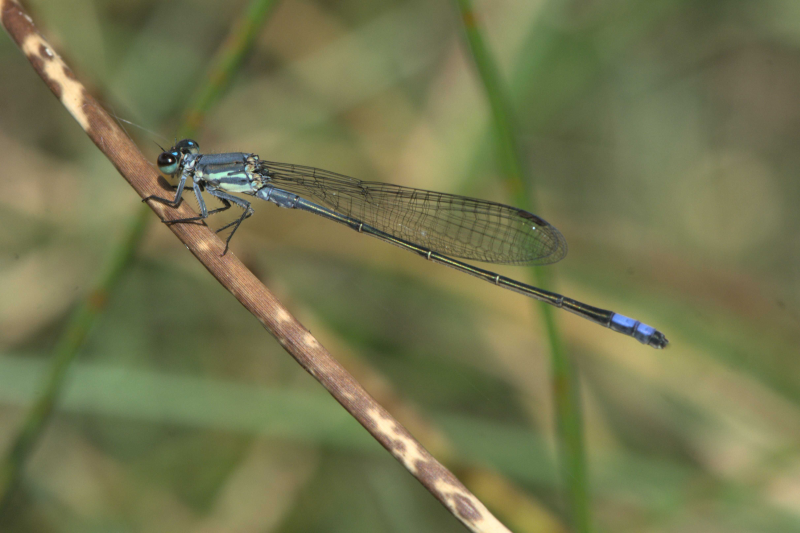Cover photo by Andrew & Heather Hodgson.
Find the Slate Sprite in the FBIS database (Freshwater Biodiversity Information System) here.
Family Coenagrionidae
Identification

Mkuze River, KwaZulu-Natal
Photo by Ryan Tippett
Small size
Length attains 43mm; Wingspan up to 53mm.
Male Slate Sprites are most similar to Pseudagrion spernatum (Upland Sprite) and Pseudagrion draconis (Mountain Sprite). The Slate Sprite is told from the aforementioned species by lacking pruinosity on the face and by its bronze-black abdomen that mostly lacks pale pruinosity. In addition, the 3 species all have differently shaped claspers.
Females are variably coloured from pale brownish to Blueish. They are best identified by association with the males.
Click here for more details on identification.
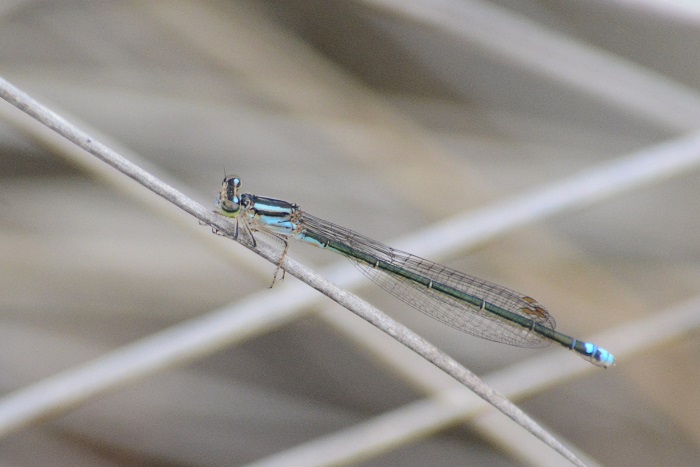
Amakhosi Game Reserve, KwaZulu-Natal
Photo by Ryan Tippett
Habitat
The Slate Sprite utilises a wide range of habitats, from rivers, streams, and marshes to ponds and the fringes of large lakes and dams. It requires emergent and fringing vegetation such as reeds, sedges, and grasses. The Slate Sprite is found from near the coast up to 1600m above sea level.
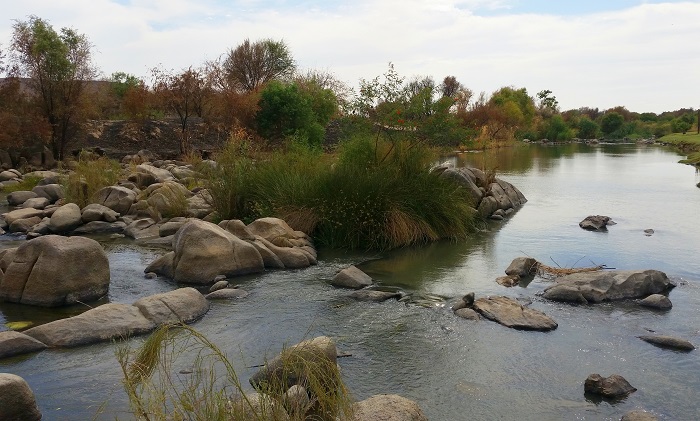
Photo by Ryan Tippett
Behaviour
The Slate Sprite is usually seen perched on vegetation close to or overhanging the water. It is sometimes also seen on rocks in the water.
It is most active from September to May. Flies all year in some places (see Phenology below).
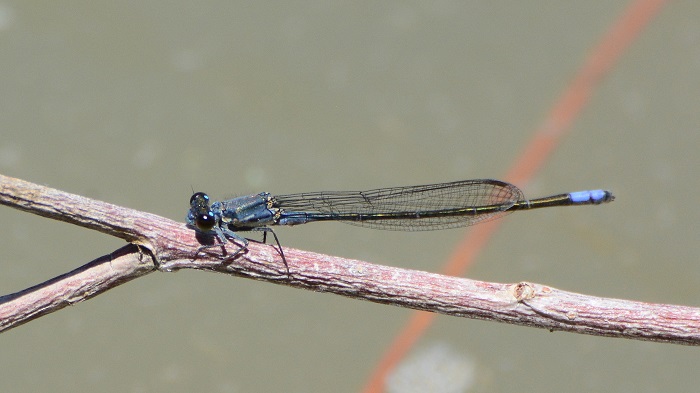
Upington, Northern Cape
Photo by Ryan Tippett
Status and Conservation
The Slate Sprite is common to abundant and is listed as of Least Concern in the IUCN Red List of Threatened Species. It readily frequents suitable man-made habitats.
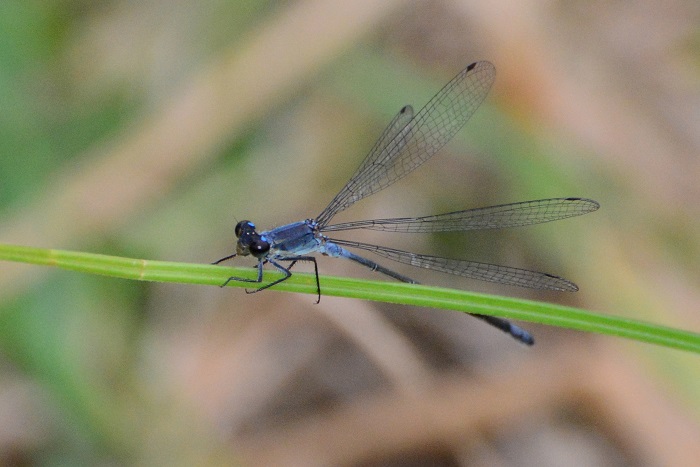
Ixopo district, KwaZulu-Natal
Photo by Ryan Tippett
Distribution
The Slate Sprite inhabits East, South-Central, and Southern Africa. It occurs from Ethiopia in the North across to Angola in the west and down to South Africa.
In South Africa, the Slate Sprite is most common in the north and east, from Limpopo to KwaZulu-Natal. It is widespread but less numerous in the Eastern Cape, Free State, and Northern Cape.

Keimoes, Northern Cape
Photo by Ryan Tippett
Below is a map showing the distribution of records for Slate Sprite in the OdonataMAP database as at February 2020.

Below is a map showing the distribution of records for Slate Sprite in the OdonataMAP database as of December 2024.
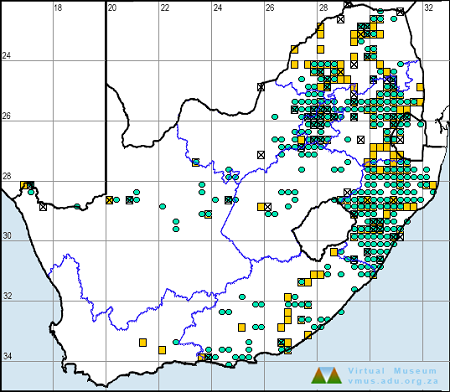
The next map below is an imputed map, produced by an interpolation algorithm, which attempts to generate a full distribution map from the partial information in the map above. This map will be improved by the submission of records to the OdonataMAP section of the Virtual Museum.

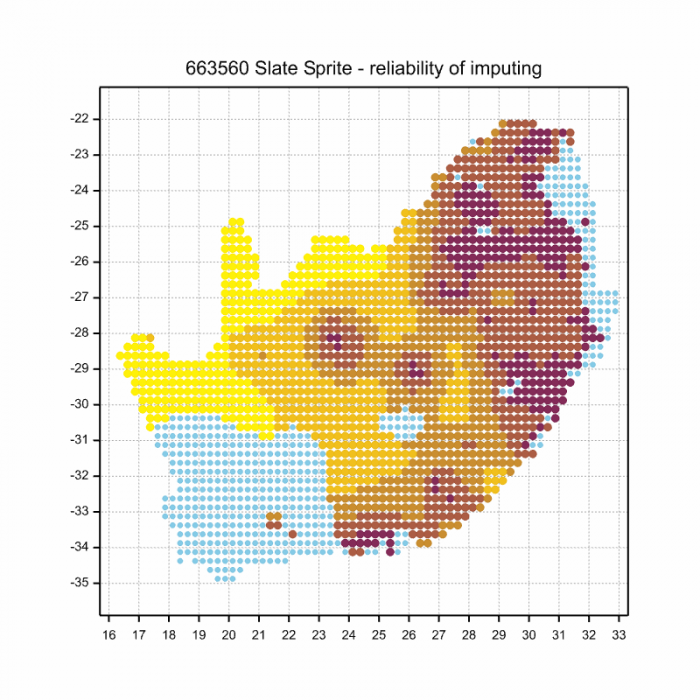
Ultimately, we will produce a series of maps for all the odonata species in the region. The current algorithm is a new algorithm. The objective is mainly to produce “smoothed” maps that could go into a field guide for odonata. This basic version of the algorithm (as mapped above) does not make use of “explanatory variables” (e.g. altitude, terrain roughness, presence of freshwater — we will be producing maps that take these variables into account soon). Currently, it only makes use of the OdonataMAP records for the species being mapped, as well as all the other records of all other species. The basic maps are “optimistic” and will generally show ranges to be larger than what they probably are.
These maps use the data in the OdonataMAP section of the Virtual Museum, and also the database assembled by the previous JRS funded project, which was led by Professor Michael Samways and Dr KD Dijkstra.

Palmiet Nature Reserve, Durban, KwaZulu-Natal
Photo by Ryan Tippett
Phenology

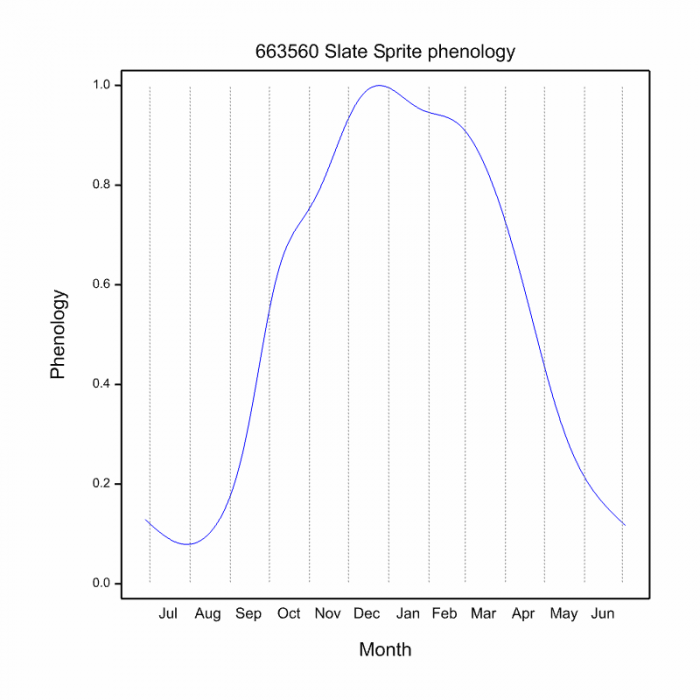
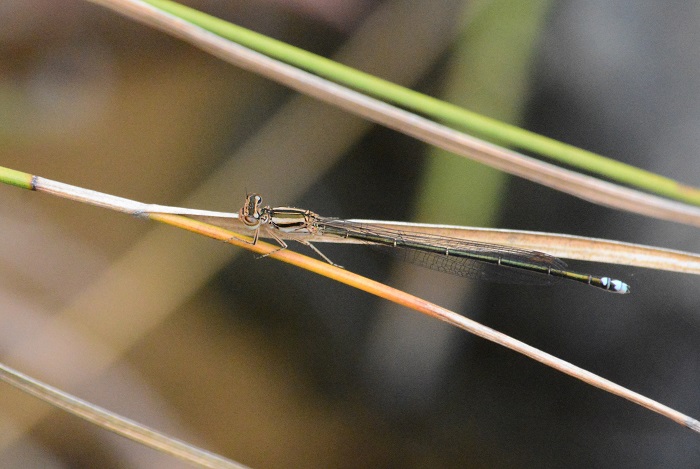
Mkuze River, KwaZulu-Natal
Photo by Ryan Tippett
Further Resources
The use of photographs by Andrew & Heather Hodgson is acknowledged. All other photographs by Ryan Tippett.
Slate Sprite Pseudagrion salisburyense Ris, 1921
Other common names: Leiblougesie (Afrikaans)
Recommended citation format: Loftie-Eaton M; Navarro R; Tippett RM; Underhill L. 2025. Slate Sprite Pseudagrion salisburyense. Biodiversity and Development Institute. Available online at https://thebdi.org/2020/05/20/slate-sprite-pseudagrion-salisburyense/
References: Tarboton, M; Tarboton, W. (2019). A Guide to the Dragonflies & Damselflies of South Africa. Struik Nature.
Samways, MJ. (2008). Dragonflies and Damselflies of South Africa. Pensoft
Samways, MJ. (2016). Manual of Freshwater Assessment for South Africa: Dragonfly Biotic Index. Suricata 2. South African National Biodiversity Institute, Pretoria
Martens, A; Suhling, F. (2007). Dragonflies and Damselflies of Namibia. Gamsberg Macmillan.
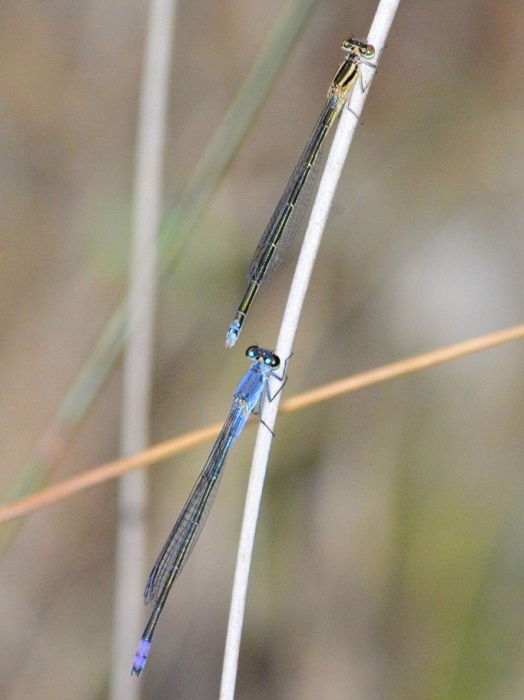
Mkuze River, KwaZulu-Natal
Photo by Ryan Tippett

